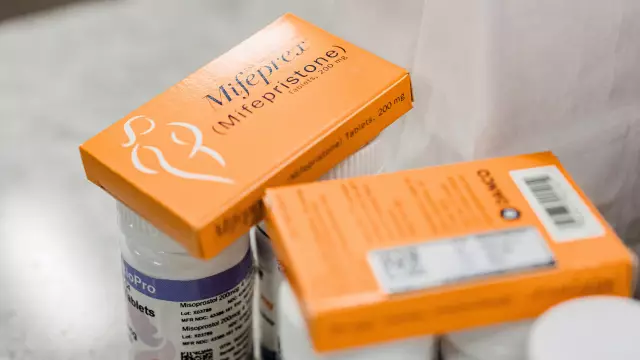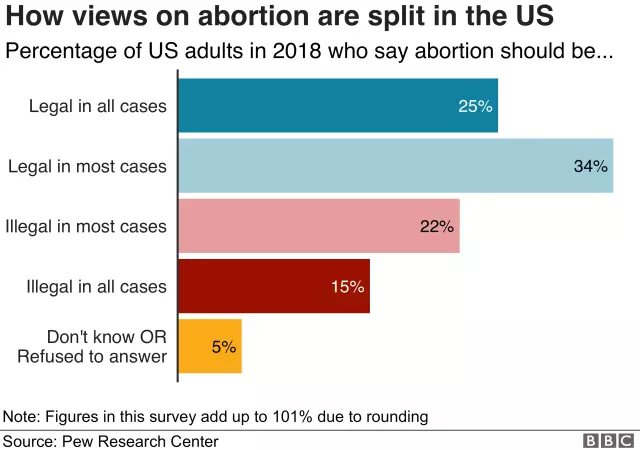- Author Rachel Wainwright [email protected].
- Public 2023-12-15 07:39.
- Last modified 2025-11-02 20:14.
Abortion at 9 weeks
An abortion is the termination of a pregnancy before 28 weeks.

A spontaneous abortion can occur at any stage of pregnancy. Abortion before 16 weeks is called early, from 16 to 28 - late, and if the abortion occurs between 28 and 37 weeks, this is considered to be premature birth.
An abortion at 9 weeks gestation can be as follows:
• Medical abortion at 9 weeks. This method consists in taking specialized medications according to the scheme. It is produced using the substance mifepristone, which blocks the action of progesterone. When exposed to this substance, the cervix softens and opens, during which the fetus is excreted from the body. The advantage of medical abortion over others is that there is no risk of infection. This method of abortion is contraindicated in case of ectopic pregnancy, bronchial asthma, the presence of scars on the uterus, individual drug intolerance and renal failure. Pain during a medical abortion is similar to the pain during menstruation in the abdomen. After taking mifepristone, bleeding begins, which is similar to bleeding during menstruation and lasts for 12 days. But it's worth rememberingthat medical abortion at 9 weeks of gestation may be ineffective if the woman does not bleed after taking the drug, or only very slight spotting is observed, and signs of pregnancy continue;
• Surgical abortion at 9 weeks. The surgical method uses the curettage method;
• Vacuum-excohleation (aspiration) with further scraping. This method allows you to instrumentally remove the ovum by sucking the egg and its shell from the uterine cavity using a special apparatus that creates negative pressure in the uterus. This method is less traumatic than surgical and also leads to fewer complications.
Termination of pregnancy at any time has a very negative effect on a woman's health, so try to follow contraceptive methods to avoid unwanted pregnancy.
The consequences of an abortion at 9 weeks
Complications after an abortion can be early and late. Early complications develop during an abortion at 9 weeks or immediately after it, and later complications appear after time, in some cases years after the operation.
Of the early complications, the most dangerous is a violation of the integrity of the uterine wall (perforation) and rupture of the uterus. Perforation leads to damage to large vessels, bladder and peritonitis (inflammation of the peritoneum). The most common complications include bleeding, bleeding disorders, damage to the cervix, and blockage of blood vessels (embolism). Also, incomplete extraction of the ovum very often occurs. After an abortion, chronic diseases of the genital organs, such as endometritis and salpingo-oophoritis, are necessarily exacerbated.
During an abortion, an infection (infected abortion) is often brought into the uterus.

If bacteria enter the uterus, inflammation of the uterus and ovaries with their appendages occurs.
Late complications after abortion include inflammatory diseases of the genital organs, endometriosis, hormonal disorders, infertility, ovarian dysfunction, complications of pregnancy. If dilators are used during an abortion at week 9, then very often there is an insufficiency (incomplete closure) of the cervix.
After an abortion, the frequency of ectopic pregnancies increases significantly. After a single abortion, the threat of miscarriage during the next pregnancy is 26 percent, after two - 32 percent, after three or more - 41 percent. Also, the risk of the formation of tumors of the body and cervix, mammary glands increases significantly.
After an abortion, menstruation can take a very long time - from three to seven months, and the danger of becoming pregnant again during this period is very great.
YouTube video related to the article:
Found a mistake in the text? Select it and press Ctrl + Enter.






